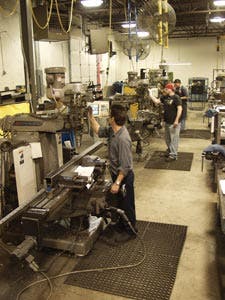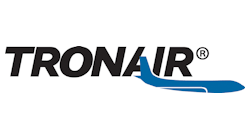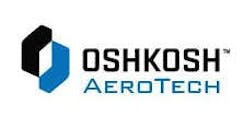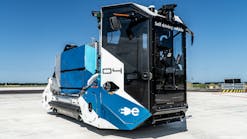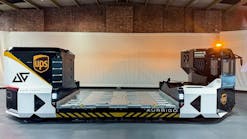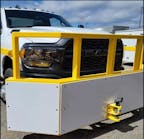With more than 1,000 GSE products, Tronair Inc. has continued to add to its inventory while streamlining manufacturing operations. Compounded with an increased presence overseas, the company has braced itself for a newly booming GSE industry.
A LEAN MACHINE
“We’re constantly developing new products based on what our customers are asking for,” says Ken Greene, president and CEO of Tronair.
The Toledo, Ohio-based GSE provider, which has specialized in aircraft weighing less than 100,000 lbs, has developed a vast line of products, including towbars, jacks, hydraulic power units and deicers. The company has also accrued a sizable customer base, including aircraft manufacturers and airlines.
Creating new products each year, the engineers at Tronair have worked diligently to configure solutions for clientele, Greene says. “We have a fairly large department of engineers working, using solid modeling software, developing innovative products and solutions for our customers,” he says.
Using finite element analysis software in its product development, engineers are able to locate and rectify potential design flaws related to stress load points. “It will show you the stress on the materials with that load applied to it,” says Paul Spinazze, engineering manager at Tronair. “The picture is blue, which means no stress. But then you’ll see concentrations. It will go from basically green to yellow to red, where you have a high stress area. What that means for us is we would then review what the stress is, what is causing it and probably alter the design to relieve that stress.”
Greene says design modeling, as well as consultations with customers have prompted frequent innovation. “It happens on a daily basis,” he says. “You couple that with the customer-driven attitude; we get with the mechanic or ramp service person or engineer and really try to understand their requirements so that when we do come up with a solution, it’s useful and can help them in every way.”
To cope with product demand, the company has worked to improve efficiency through “lean manufacturing.” “What that means is we’ve gone through and taken products that use to take us weeks to build and we now build them in days,” Greene says. “We really reduced a lot of the waste associated with the production process.”
Adhering to the “theory of constraints,” Tronair has worked to identify and eliminate “bottlenecks,” or areas in its manufacturing process where demand is greater than resource, Spinazze says.
A PROCESS OF GROWTH
Since its inception in 1973, the company has expanded its operational resources and has established a presence throughout the globe. The company was initially formed as part of the Dana Corporation flight department. Called Danair, it produced towbars and jacks for Learjet, Falcon jet and Gulfstream GI.
In 1980 Danair was bought by Tronco, which changed its name to Tronair. The name change was accompanied by a move from a 5,000-square-foot facility to its current location in Ohio, which is about 100,000 square feet.
A private investment firm acquired Tronair in 2000. By 2006 Tronair had acquired both Arvico and Jetporter companies.
In recent years Tronair has branched out internationally. The company has set up sales and order offices in Europe and Asia, and repair and service centers in Japan, Korea, Singapore, Germany, England and France.
The locations were strategically determined for proximity to demand — a process that has remained continual, Greene says. “We are constantly trying to locate, whether it be manufacturing or servicing, where our customers need it most,” he says.
The company has continued to plan for expansion, currently prospecting new sites within the US and Asia. Though the exchange rate has presented a cost advantage for operations in dollar or comparable zones, Tronair has not been deterred from considering expansion in additional regions, Greene says.
Industry potential has kept Tronair primed for action. Citing promising industry outlooks, Greene says the future of GSE looks bright. “There is nothing but good things happening,” he says. “Every one of those forecasts no matter how you slice it is very positive and upbeat. It’s a great time to be in the industry.”
